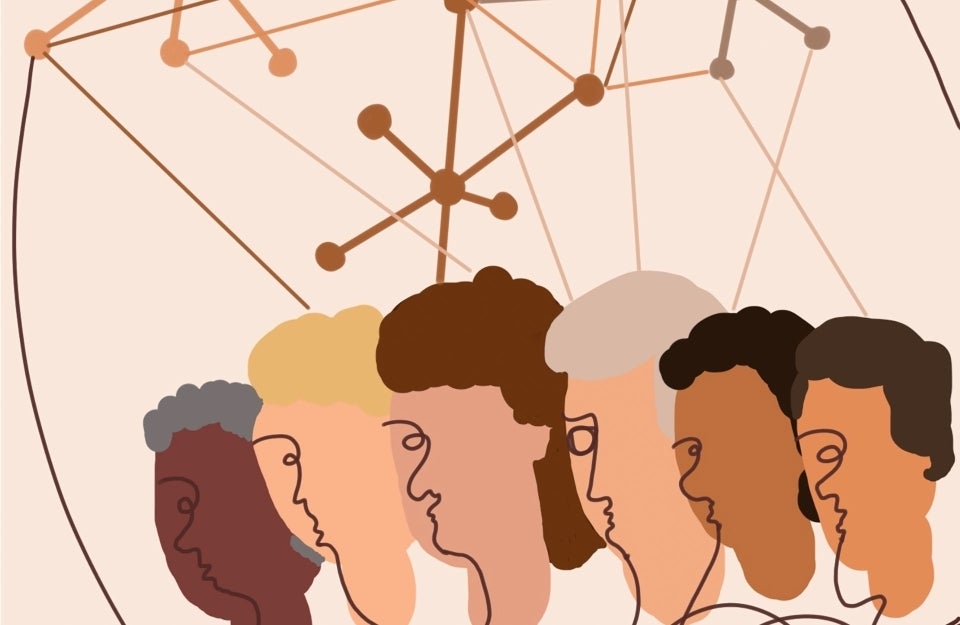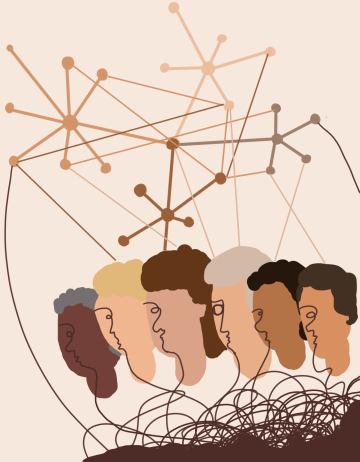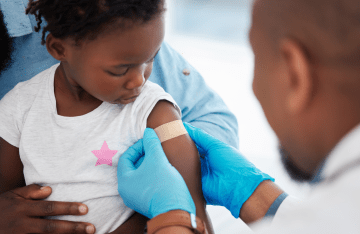Clinician Peer Networks Remove Race and Gender Bias
Annenberg study finds structured healthcare networks significantly reduce healthcare inequities and disparities in patient treatment.

Image Credit: Somalee Banerjee
A University of Pennsylvania study published today in Nature Communications offers striking evidence that network science can be used to remove race and gender bias in clinical settings. The study, led by Professor Damon Centola of the Annenberg School for Communication and the School of Engineering and Applied Sciences, offers an effective new way to ensure safer, more equitable healthcare for women and minorities through managing clinician peer networks.
Using an experimental design, researchers showed that clinicians who initially exhibited significant race and gender bias in their treatment of a clinical case, could be influenced to change their clinical recommendations to exhibit no bias.

“We found that by changing the structure of information-sharing networks among clinicians, we could change doctors’ biased perceptions of their patients’ clinical information,” says Centola, who also directs the Network Dynamics Group at the Annenberg School and is a Senior Fellow of Health Economics at the Leonard Davis Institute. “Put simply, doctors tend to think differently in networks than they do when they are alone.”
In the experiment, the researchers asked 840 clinicians to watch a video of a patient giving a clinical history detailing risk factors for heart disease. Half of the clinicians saw a white male actor portraying the patient, while the other half saw a Black female actor. The videos were otherwise identical.
Clinicians then chose one of four treatment recommendations based on the patient’s information: an unsafe option, an under-treatment option, the correct guideline-recommended option, or an over-treatment option.
Initial results showed the Black female patient was 49% more likely than the white male patient to be sent home. Conversely, the white male patient was 78% more likely than the Black female patient to be referred to the emergency department. The results reinforced a well-documented fact of American healthcare: extensive race and gender bias in medicine.
In an attempt to mitigate these outcomes, the clinicians were then divided into two conditions: an experimental condition and a control condition. The control groups watched the video alone, with no input from other participants, and had the opportunity to revise their recommendations. However, the control groups showed no change in medical bias.
In the experimental condition, the clinicians were connected into large, anonymous peer networks with 40 other clinicians. Each participant was able to see the evaluations made by their network peers and had an opportunity to change their recommendations.
The peer network effects were remarkable. Not only did the networks lead to improved clinical accuracy, but they eliminated treatment disparities from clinicians’ recommendations, resulting in the white male patient and Black female patient receiving the guideline-recommended care at the same rate.
“We tend to think of doctors making rational decisions based on medical evidence,” says Centola, “but medical bias is often rooted in professional norms. Altering clinicians’ networks can change these norms, leading to higher quality treatment recommendations for minority patients.”

Strikingly, the findings also revealed that the network approach to bias-reduction improved the quality of care for everyone. Researchers found that the rate of over-treatment — i.e., recommending an unnecessary, invasive procedure — increased for both of the patients in the control groups, while it significantly decreased for both patients in the experimental groups.
The rising prevalence of telemedicine and online clinical support networks offers a promising opportunity for new information-sharing technologies to support clinical decision-making. This network approach to eliminating bias may also be implemented in other medical settings that are known to exhibit significant race and gender disparities— from childbirth and acute pain management to mental health and urgent care decisions for COVID-19 related illness.
“Using network technologies to improve healthcare is the future of medicine,” Centola says. “Our next step is working with hospital systems to implement effective peer-networking programs across the country.”
In addition to Centola, authors on the paper include recent Annenberg graduates Douglas Guilbeault, Ph.D., and Jingwen Zhang, Ph.D., along with UCSF physicians Urmimala Sarkar and Elaine Khoong. The study was funded by a Robert Wood Johnson Foundation Pioneer Grant to Centola.



